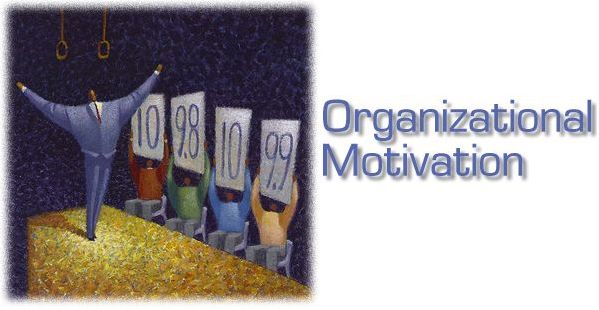
 |
|
Dump the Cash, Load On The Praise by Bob Nelson. Extensive article covering the full range of issues about what motivates employees, including common misperceptions about the role and importance of money as a motivator. The results of many studies and surveys on motivation are included. The article concludes with a concise list of "Top Ten Ways to Motivate Today's Employees." X Appeal: Secrets to Managing Generation X by Robert McGarvey, Entrepreneur Magazine, May, 1997. Very practical advice about how to best motivate a younger workforce and how this contrasts with what motivates older generations. For example, Generation X (Xers) prefers interesting, meaningful responsibilities, individuality and flextime over traditional perks such as official promotions and job titles. Inspiration Points by Robert McGarvey, Entrepreneur Magazine, September, 1997. Practical advice for motivating employees, from communicating the company's key values to allowing employees a high degree of job autonomy. Self Actualization and Self Esteem are the Highest Order of Incentives by Frank C. Hudetz. This article discusses how employees will give their best efforts when they are recognized for their work and have the opportunity to experience fulfilling jobs. Also covered is the effective and ineffective use of rewards in getting the best performance from employees. Boosting Employee Morale by the U.S. Small Business Administration. The key theme of this document: Money is not the key factor in motivating employees but creating an optimal working environment. This article describes "seven key issues in creating such an environment," such as:
Rewards
Produce Temporary Compliance by Alfie Kohn. Bolstered by research
in social psychology, the author criticizes the reliance on external rewards
– such as Articles by Jack Deal, Deal Consulting. In each of the articles below, the author presents his case for decentralized management as a means to better motivate employees:
Measuring Morale by Jack Stack, Inc. Magazine, January 1, 1997. See two examples of surveys for measuring morale. The advantage of conducting these surveys is that companies can use survey results to measure employee morale -- and thereby take tangible, corrective actions based on the findings. The article provides specific examples from actual companies of how the company made changes based on responses to survey questions. The Ten Ironies of Motivation by Bob Nelson, Workforce Online (Workforce requires that you complete a free registration before gaining access to its articles). Among the ten ironies that are discussed:
Targeted
Rewards Have Greater Value—and Bigger Impact by Kevin Wallsten,
Workforce Online (Workforce requires that you complete a free
registration before gaining access to its articles). This article describes
a a "movement in employee motivation that focuses on recognizing workers
efforts more informally, more personally and, most importantly, more often."
Instead of traditional recognition programs, such as employee-of-the-month,
these new "recognition programs focus on spontaneous, sincere and personal
appreciation of employee efforts." For example, at Ford and AT&T, top
performing employees might appear in company commercials. In addition to success
stories, the article explores reasons why some companies are hesitant to implement
informal recognition programs and why some employees may have a negative view
of them. The Open Book Management Opportunity by Charles Proudfit, The Small Business Journal. "Open-book management is a system in which a company fully shares its financial status with its employees, who then become active participants in a coordinated effort to optimize future financial performance." Having defined open-book management, the article addresses the following questions:
Workplace Atmosphere: the Ultimate Competitive Advantage? by Jack D. Deal, Deal Consulting.. The author relates his experience with companies who successfully motivate employees through two key steps:
|
|
|
Motivation Theory by accel-team.com. After reading an introduction to importance of improving human relations in the workplace, review the summaries of the motivational research and theories by these prominent writers:
Hawthorne Experiments by accel-team.com. Summary of Elton Mayo's motivational experiments at the Western Electric Hawthorne Works in Chicago and a commentary on the findings. |
|
|
Perspectives for Empowerment by John Hawkins, Leadership Edge, May 1997. The article starts with a description of three failed approaches to empowerment. They include empowering employees without ensuring that those employees appreciate and understand the value of what they have received and to give in to demands by employees for greater control who have not proven themselves trustworthy and accountable. The author then contrasts these approaches with three principles for effective empowerment, such as: "No person can empower another person. One can, however, give to another the tools of empowerment" and "The fruit of empowerment must be positive interdependence."
|
|
Copyright © 1999-2001 South-Western, A Cengage Learning Company.
All rights reserved.
For problems or suggestions concerning this service, please contact Internet Webmaster.